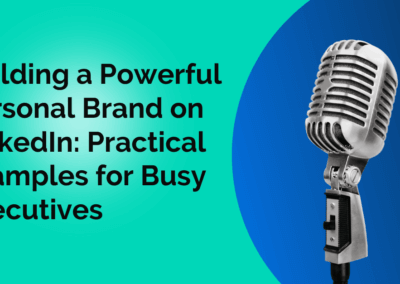The modern sales and marketing professions are becoming increasingly intertwined, and with good reason; to generate truly qualified leads, sales, and marketing departments must be in constant communication regarding company messaging and revenue goals.
To better understand how companies are making it their mission to fully align sales and marketing efforts, SmarkLabs spoke with FunnelWise CEO Matt Ostanik, who developed the FunnelWise solution to help combine both sales and marketing data to increase full-funnel visibility.
Read the interview highlights below, or download the podcast to listen to the full conversation, beginning to end!
SL: So, first of all, can you tell me about the founding story behind FunnelWise?
MO: FunnelWise is my second startup company. In 2006 I founded a SaaS company that provided a product for the commercial construction industry, but I used to get very frustrated trying to understand what was happening in the sales and marketing funnel.
With Salesforce I could get answers to backward-looking questions like “how many phone calls did my sales team make yesterday?” But, I couldn’t always get clear visibility into forward-looking questions like, “Will we hit our revenue goal for this quarter?”
I began to download data and build complicated spreadsheet models to reflect our funnel. I had an idea for a solution that would do that funnel visibility and intelligence automatically, which is ultimately what FunnelWise is today.
SL: Why is sales and marketing alignment so important in today’s business landscape?
MO: When it comes to data, there’s an increasing silo effect that’s happened with the growth of technology. Marketers have powerful automation systems, and they tend to live in that world, whereas sales staff tend to live in their CRMs. There’s a need to connect the data together and take a holistic view of the entire journey that a customer takes.
On the people side, sales and marketing professionals have different personalities. They need to have shared goals and conversations about what’s happening as a whole.
I’ve written a book called “Revenue Funnel Science” that talks about the methodology of how to measure and optimize your funnel. The first two sections are data-heavy and focus on analytics, but the third section is people-centric. I recommend that companies form a “Revenue Leadership Team” where sales and marketing leaders are jointly responsible for the company’s revenue goals.
SL: It’s really interesting that you think sales and marketing people have different personalities. Can you elaborate on that?
MO: Sales professionals tend to focus on action and moving prospects forward, while marketers focus on creativity and managing broader systems. Marketers view their conversations as one-to-many whereas sales professionals view conversations as one-to-one. Salespeople are more dollar-driven, tend to focus on revenue and commission bonuses. Marketers tend to have more intrinsic motivations that aren’t always tied to dollars.
SL: Do you think there are common misconceptions about marketing and sales alignment? If so, what is FunnelWise doing to dissipate those preconceived notions?
MO: We’re doing two things; we’re addressing the data side with our software product, and we’re spending time on education and training around sales and marketing alignment. We’ve also done workshops around the country, and we speak at events to help get the message out.
One of the concepts we talk about is “Revenue Funnel Science” as a “hat.” When you put on that hat, you can dig into the numbers and get a better understanding of the system, and learn best practices for how to analyze and forecast where the business is going. That hat can be worn by both marketing and sales professionals.
SL: You spoke about companies developing a “Revenue Leadership Team” that brings together sales and marketing, but now you talk about this hat. Do you think the sales and marketing professions will continue to be two separate professions, or combine into one?
MO: It’ll be really interesting to see what happens over the next 10-20 years. There’s an argument to be made that as marketers get more into demand generation, full-funnel marketing and more engaged in feeding sales professionals, the boundaries between what is sales and what is marketing will become fuzzier.
There’s also an argument that the personality styles are so different, and each area is so complex, that it’s really difficult for them to combine into one thing. I’m not sure which argument will win out, but it’s fascinating. I definitely think we’re in the middle of huge changes that will keep evolving.
SL: You mentioned sales professionals are more and more focused on the bottom of the funnel. With the increasing prevalence of online reviews and information, the salesperson isn’t necessarily the first point of contact anymore. How do you see sales professionals’ roles changing?
MO: It really depends on the business, and the product or service they’re selling. The most successful salespeople are the ones who are able to challenge views, and get buyers to see a problem differently. When you’re selling something that people aren’t shopping for yet, it’s different than when you’re selling something that people have already figured out on their own.
SL: It’s no secret that the industry is constantly evolving. What’s your process for staying up-to-date on the latest sales and marketing trends?
MO: In the space, we’re fortunate. There are so many good organizations out there putting out great content. I’m very active on Twitter, but I also spend a lot of time trying to read and find good content from others. I also tend to follow companies that specialize in sales and marketing research, to learn about what’s new.
“The Challenger Sale” and “To Sell Is Human” are also great resources for beginners. “To Sell Is Human” is a book about sales, written for non-salespeople. “The Challenger Sale” is much more detailed, written for salespeople.
SL: If you could predict the future, what would you guess to be the “next big thing” in marketing and/or sales?
MO: Technology is changing the industry, but there are so many options. People need to focus on the overall strategy and how tools relate to what they’re trying to accomplish. I think people will move from just, “Hey, we’re going to try every new tool out there,” to having more focus, more consolidation, and more integration over time.
Marketing is going through an evolution. One of the best things I can recommend for sales and marketing alignment is that marketing should be responsible for a revenue goal. There’s a lot of changes that have yet to happen on the marketing side that will put more focus on alignment.
SL: What’s something you’re passionate about, other than work?
MO: I would say the things I’m most passionate about in life are family and growing my business. I often tell our employees that work-life balance does not mean you work 40.0 hours per week or leave the office at 4:59 p.m. every day. I actually think that work-life balance means that work and life are flexible, and coexist with each other. The older generation “lived to work,” but many folks today “work to live” to support their lives. A good work-life balance is when a company and career can support what’s happening in your life, as well.
SL: If you met your professional younger self, what’s one piece of advice you’d give yourself?
MO: One piece of advice would be, “don’t be afraid to take risks.” Take smart risks, don’t take crazy risks, but be willing to take smart risks. Particularly when you’re younger in your career. Just because you take a risk, doesn’t mean it’s going to work out. But if it doesn’t, you’ll be okay and you’ll get another job.
SL: Any last thoughts?
MO: Although sales and marketing alignment is poor, sales and marketing, in general, is exciting. There are challenges that need to be worked on, but there are tremendous opportunities. Technology is changing the game and there’s so much energy around learning new things. It’s a really exciting time.




